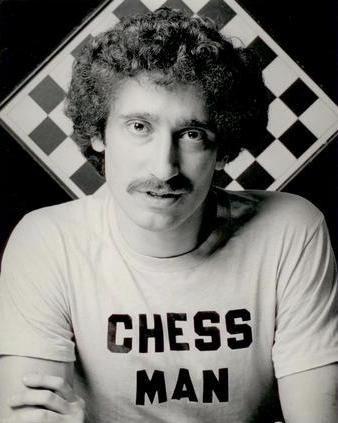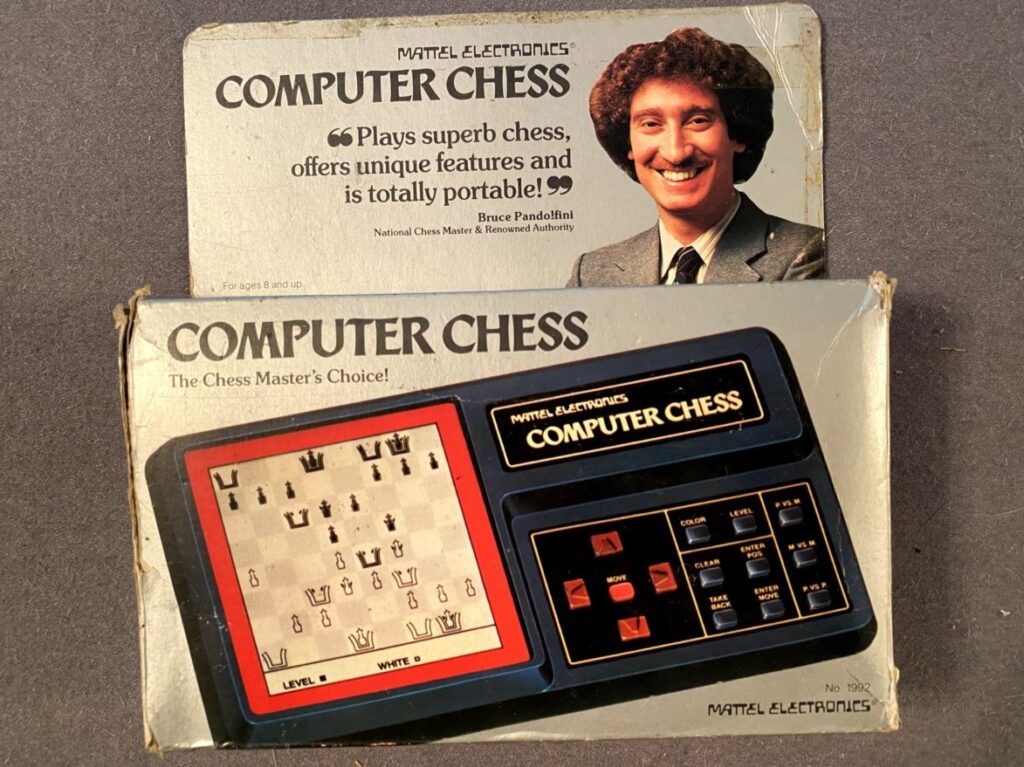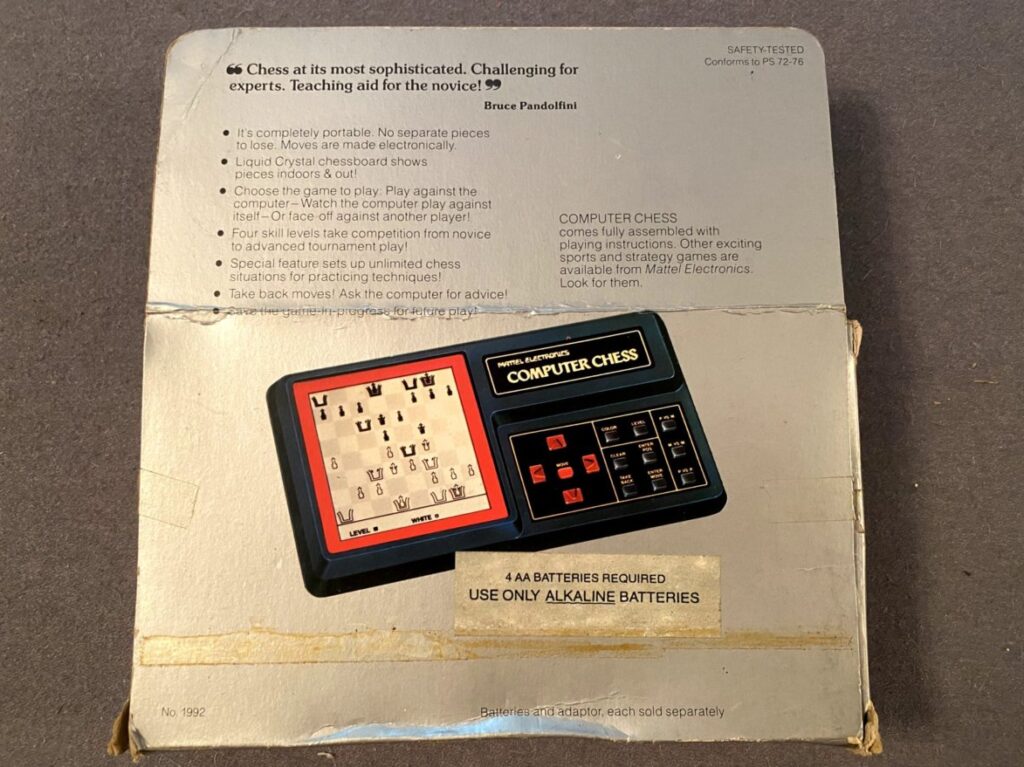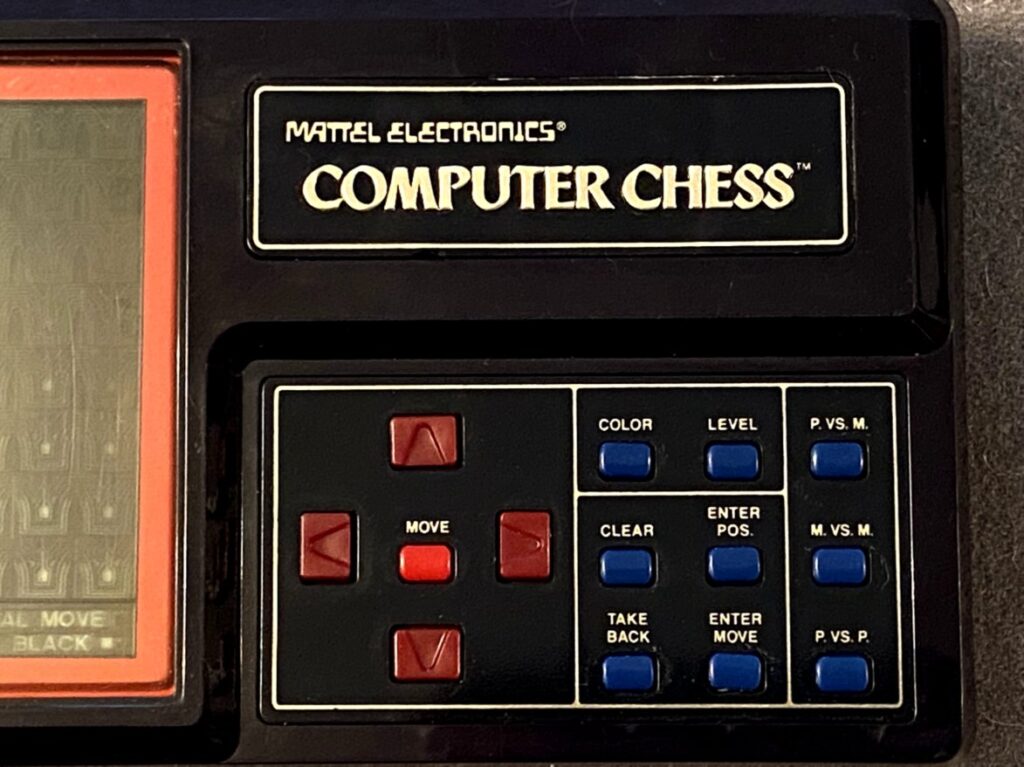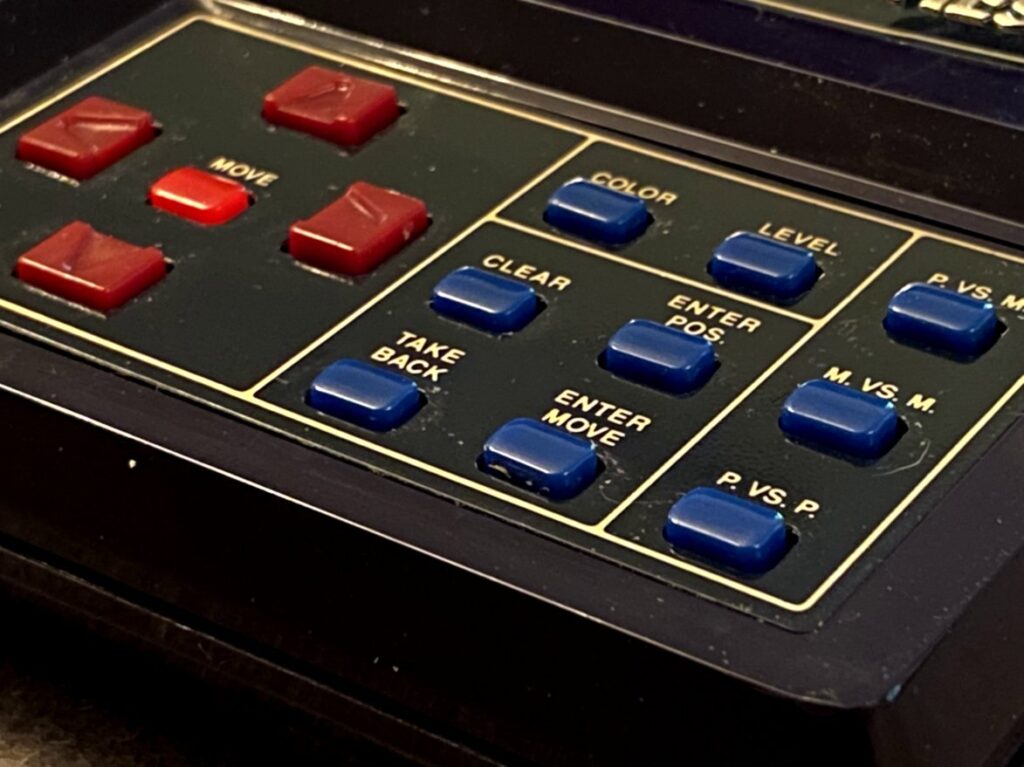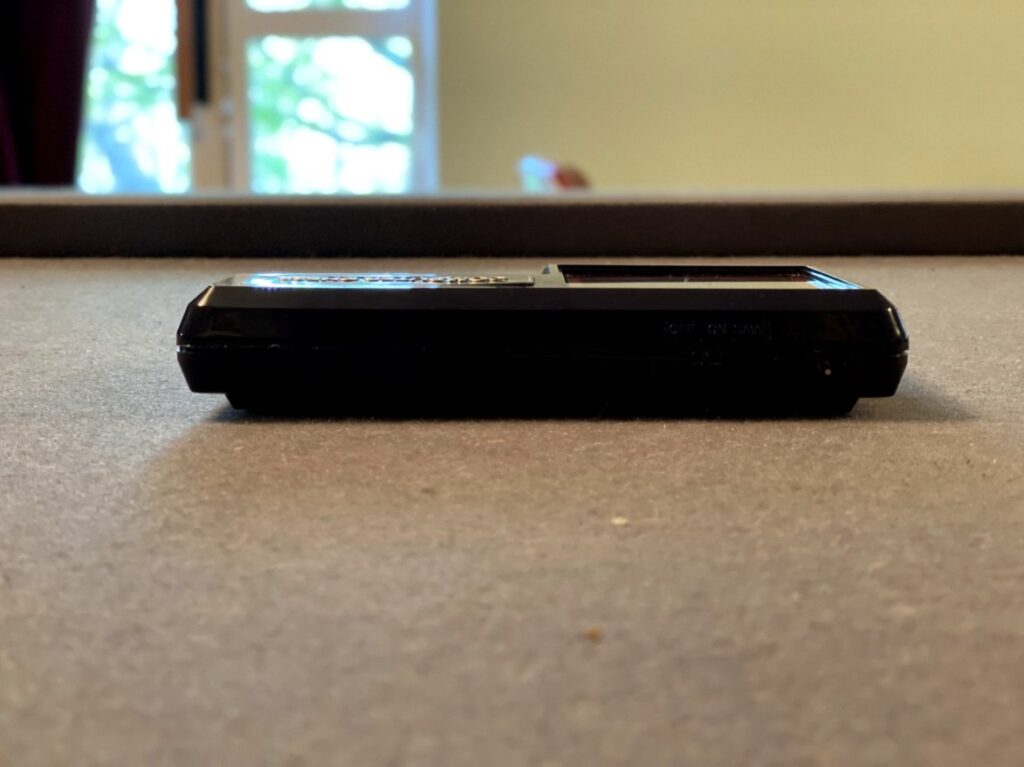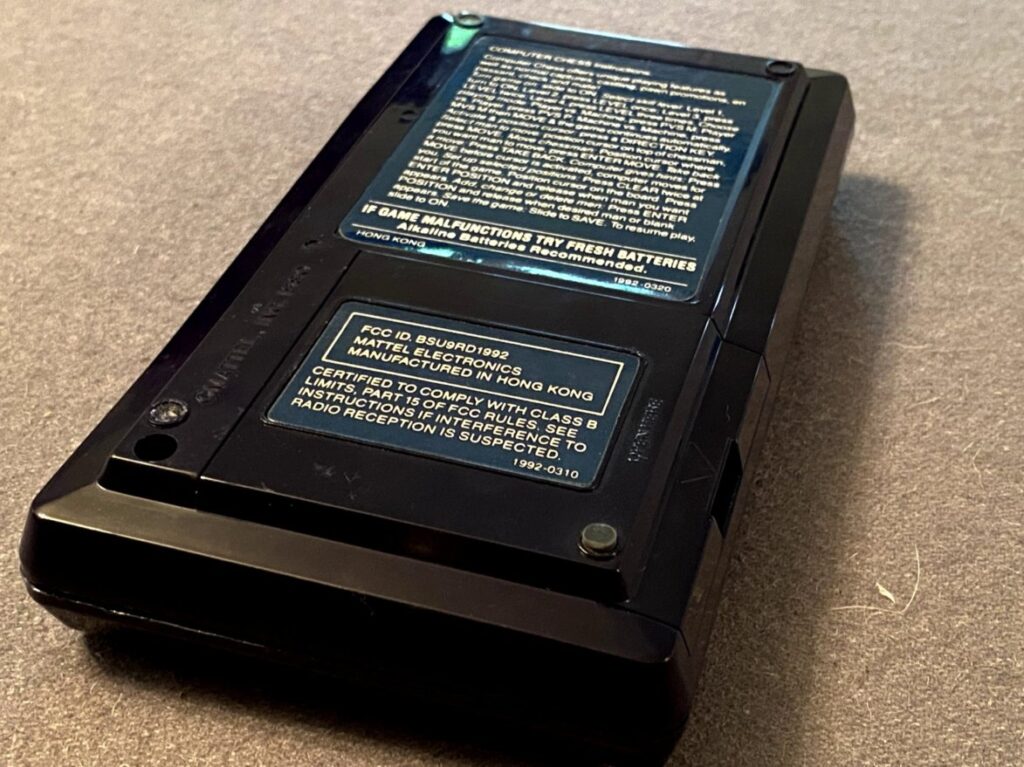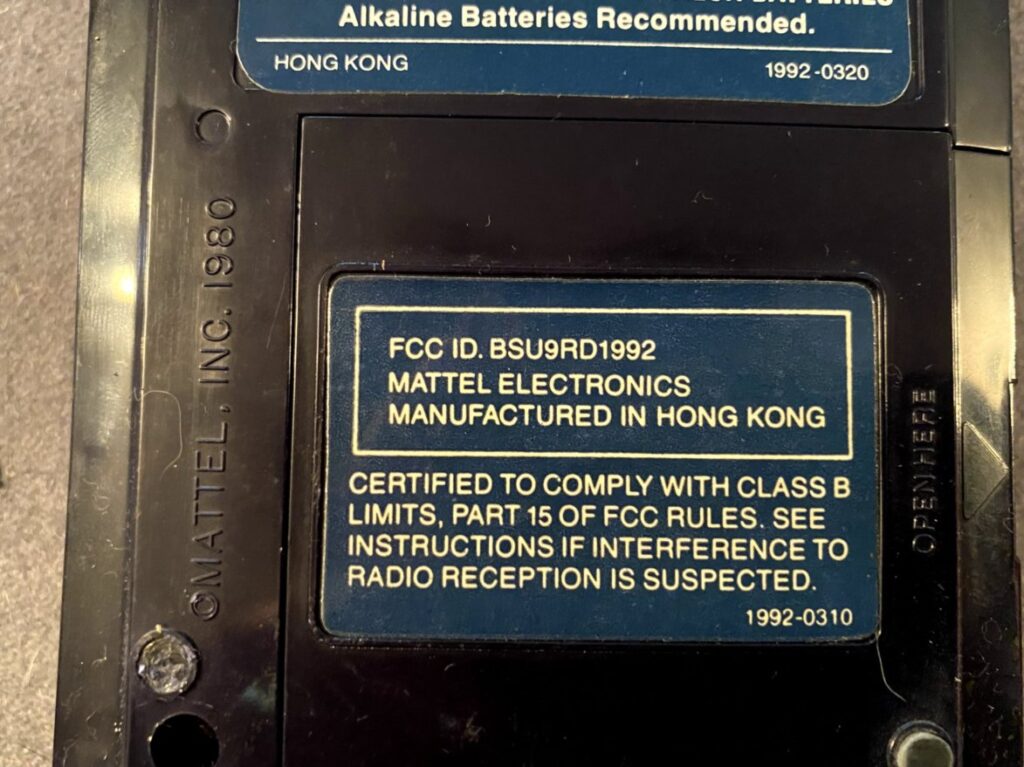The Queen’s Gambit and Mattel’s Chess
May 7, 2021Before The Queen’s Gambit, before the more than 30 published books about chess, there was a chance phone call and a bit of Mattel Electronics plastic.
Today Bruce Pandolfini is considered to be America’s most experienced chess teacher with more than 30 chess books to his name, including Pandolfini’s Ultimate Guide to Chess. While perhaps not a household name, his work with the likes of teen chess grandmaster Fabiano Caruana, double U.S. women’s chess champion Rachel Crotto, and Searching for Bobby Fischer prodigy Josh Waitzkin makes him a bit of a chess superstar.
But back in the late ‘70s, he just happened to be the guy who answered the phone at the Marshall Chess Club at the right time. Pandolfini tells me that call and the deal to rep 1980’s Mattel Electronics Computer Chess game sparked a tidal change in his life.
As Pandolfini tells it, he happened to be hanging around the Marshall Chess Club in Greenwich Village, New York, one morning when the phone rang.
“I answered a phone call without giving my name while at the Marshall Chess Club,” Pandolfini told me. “It was 9 a.m. I was asked a few questions about chess and answered them on the spot. It became clear the caller was representing a client who wanted to promote a new chess product. A light bulb went off. I mentioned there was one person they had to speak to. He knew the chess market better than anyone. I really sold this chess personage in a way I could never ordinarily do. The caller at the other end got all excited. I then gave this expert’s name and answering service number. That is, I gave my own name and number.”
That bit of anonymous self-promotion led to a second call later that morning — this time for Pandolfini — from iconic ad agency Ogilvy & Mather. After a couple more exchanges by phone, the group flew Pandolfini out to LA.
“There, I met with various representatives from O & M, Edelman Associates, and Mattel Electronics,” he said. “They really grilled me. O & M particularly was amazed that my analysis of the market essentially corresponded to theirs. I think it blew their minds. They had previously interviewed a batch of other authorities and didn’t like any of them. Anyhow, they ostensibly liked me.”
A lunch with a Mattel account executive led to a job offer to be the spokesperson for a new handheld: Mattel Electronics Computer Chess.
“My mind was blown,” he said. “True, once I was out on the coast, confronted by all their intimidating team, I had to satisfy their doubts. Thank heavens, I was able to. But I would never have had the opportunity if not for blind luck and being quick on my feet.”
“Plays subperb chess, offers unique features and is totally portable!”
Pandolfini quote from Computer Chess box
Pandolfini was an early chess bloomer, like many of the players he would go on to teach. He immersed himself in chess books at an early age and reached chess master by his late teens. His playing career ended after a loss to Grandmaster Larry Evans at the National Open in Las Vegas in 1970.
Two years later he started doing analyst work for PBS, helping to cover the Bobby Fischer Boris Spassky match-up. Soon after, Pandolfini began teaching chess, going on to form U.S. Chess Masters.
It was that Mattel Electronics call, though, and the two years spent promoting the handheld electronics chess game that really helped to shape the direction of his career.
“I encountered sundry Hollywood stars and bigwigs,” he said of his time repping the game. “The adventure certainly expanded my horizons. I met many nice people. I think I was good at what I did for the company. It was great to be at the right place at the right time. But I also had to be sentient and creative.
“Those two years enlarged my prospects in publishing, TV, and film. It led to a nine-book contract with Simon & Schuster and a relationship with Random House. From RH, I got connected to a brilliantly innovative new book, ‘The Queen’s Gambit.’ I became the principal consultant for Walter Tevis’ visionary work, giving the novel its title, and 18 years later, it culminated in an extraordinary seven-part Netflix series.”
Mattel dove into the handheld electronic games market – and sort of created it – in 1976 with the release of Auto Race. The success of that odd little side project led the company to dive headfirst into the electronic games market with Mattel Football and then the creation of the incredibly successful Mattel Electronics Division in 1978. By 1982, Mattell Electronics became so successful that it formed its own corporation. And then, the company nearly went bankrupt a year later with a massive $394 million loss thanks to its venture into video games.
But in that brief window between 1977’s Mattel Football and the 1983 collapse, the company decided to expand beyond its sports-themed titles to an eclectic mix of gaming systems. That included titles like the Mattel Dungeons & Dragons Computer Fantasy Game, Mattel Backgammon, and Mattel Electronics Computer Chess.
Computer chess appears to be the first handheld chess system that was entirely electronic. In other words, it had a screen that displayed the full board and all of the pieces and buttons to move those pieces around the board. The system used four direction buttons and a “move” button to move pieces around the board. It also allows you to select the color you wanted to play and the level you wanted to play against. Finally, there were options for playing matches player versus player, player versus machine, and machine versus machine.
“Chess at its most sophisticated. Challenging for experts. Teaching aid for the novice!”
Pandolfini quote from Computer Chess box
While Pandolfini was brought in to rep the game as a chess master, he didn’t have much say in the game itself, he said.
“I had no part in developing the item or its software,” he told me. “I did meet several of the engineer/chess players who had worked on the game, and they were adept programmers. My job was to represent the product in print and media, as well as to present the game at conventions and such. Several times I spoke just before George Plimpton, who was the spokesperson for their most important electronic offering of the time, Intellivision. I recall one speech I gave at a toy-and-game gathering in Las Vegas. It was in a huge convention center, which supposedly could seat 5,000 people. I reviewed the wonders of the Mattel chess game and then introduced Plimpton for his bit. (Years later, at another chess gathering, totally unrelated to Mattel, I again had the same privilege of being on the stage with George Plimpton, and we joked about deja vu.)”
He did, however, get a chance to check out the game he would be repping before it launched. He said he wasn’t exactly blown away by it. He wasn’t a fan of the graphics. But he was impressed that such a small device was capable of playing any sort of chess.
“I thought its handheld nature was terrific,” he said. “I knew chess players had been seeking such a device for some time. So, I was thrilled to be involved. But, as I’ve said, I was not happy with the graphics. Nor did I think it played so marvelously. I was hoping the next round of tinkering would lead to a more appealing interface and a stronger game.”
In fact, after tinkering with the game a bit, Pandolfini made what he believed to be a shocking discovery: He could easily beat the game in under ten moves.
“That had to be dealt with,” he said.
Unfortunately, it was too expensive to address the problem immediately.
“They were going to fix it in the next go-round, but then the world collapsed,” he said. “When confronted with the problem at presentations I smiled my way around it like a politician. I don’t recall the specific moves. My mind obliterated them. I seem to recall it was a simple double king-pawn, Italian Game affair.
“As far as playing strength goes, the official line is that, when the device played at its top level, it could play at about 2000 strength. But the truth defies that assessment. Its practical strength was 1200-1400.”
Making his tour of the country with the device, he would answer written questions from customers up on a stage. The company was even considering having Pandolfini create a Mattel booklet with instructional tips and practical advice. But that never came to fruition. Instead, he spent his time promoting the system in person and helping the advertising and promotional people by suggesting places to reach out to and ways to improve and feature the product’s image.
He said he was working with the group on a new campaign for the system when things sort of fell apart. The company was also looking at creating a new version with a new design, better graphics, and some added features, including potentially the ability to input positions and analyze them.
But when the electronics market collapsed it took with it any dreams of a chess 2.
“I still remember the call I got from a friend inside the executive office at Mattel Electronics,” he said. “I was told they had just given pink slips to about a thousand employees. A day or so later, even more were let go. The company was going Chapter 11. My days at Mattel Electronics were over (though I was never officially so notified). “
Despite the abrupt and unofficial ending to his time with Mattel, Pandolfini said he still has fond memories promoting the game.
“Mattel was forty years ago,” he said. “Whoever I am, I’d certainly be someone else, if not for that serendipitous phone call. I shall always treasure the entire set of experiences.
“I hope I can do it all over again, in the next lifetime.”
Love retro handhelds? Well then, have I got a bunch of stories, videos, and pictures for you.
